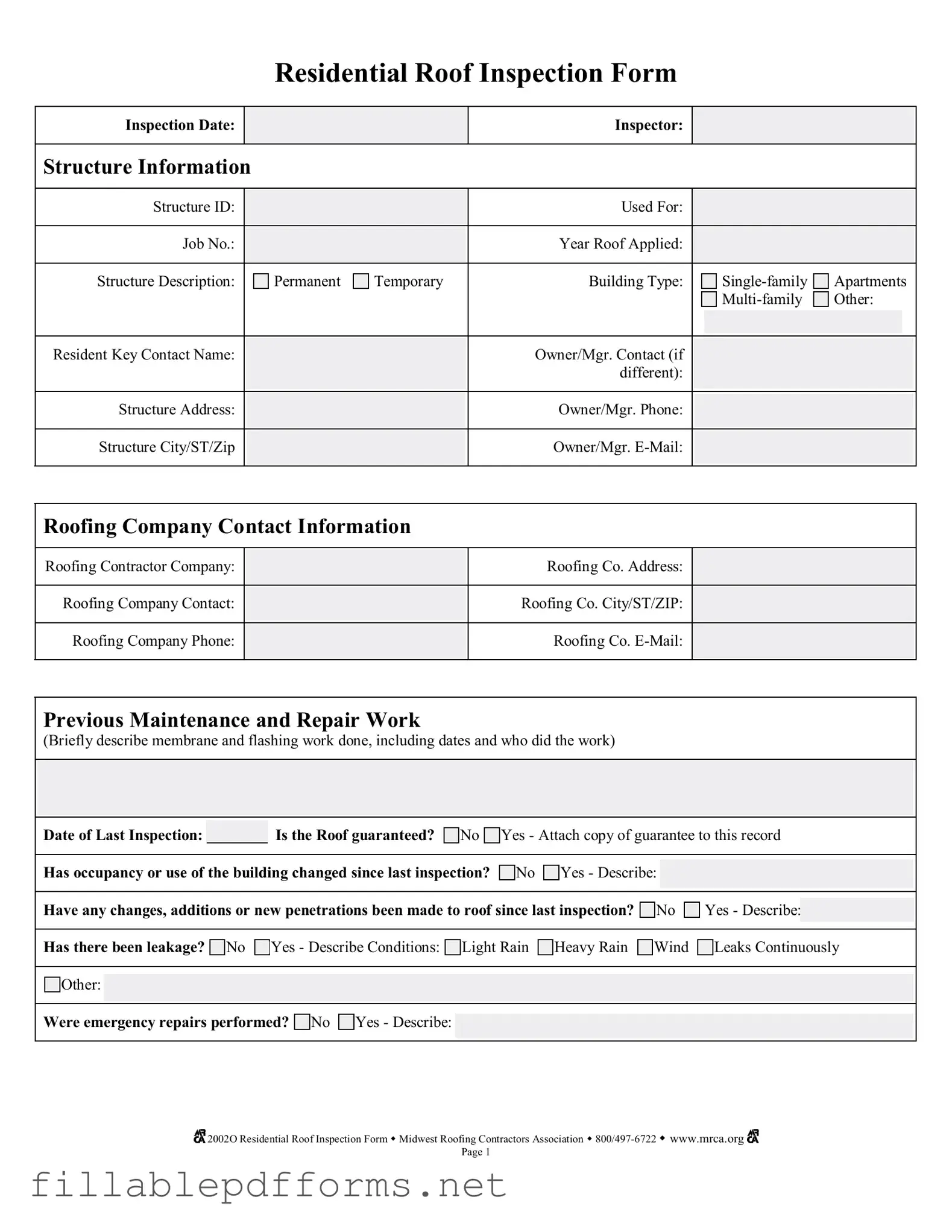The Roof Inspection Form serves as a vital tool for assessing the condition and safety of residential roofs. It includes essential details such as the inspection date, the inspector's name, and specific information about the structure being evaluated. This information helps to identify the purpose of the inspection and the type of building involved, whether it is a single-family home, an apartment, or another structure. The form also collects contact information for both the owner or manager and the roofing company, ensuring clear communication throughout the inspection process. Previous maintenance and repair work are documented, along with any changes to the building's occupancy or roof structure since the last inspection. The form addresses any leakage issues, emergency repairs performed, and the overall condition of various roof components, such as the interior roof deck, walls, and exterior features. Each section uses a simple coding system to indicate the condition of these elements, helping to prioritize necessary actions. Additionally, a photographic record can be included to support findings. This comprehensive approach ensures that all aspects of the roof's health are thoroughly examined and recorded, promoting the safety and longevity of the structure.
